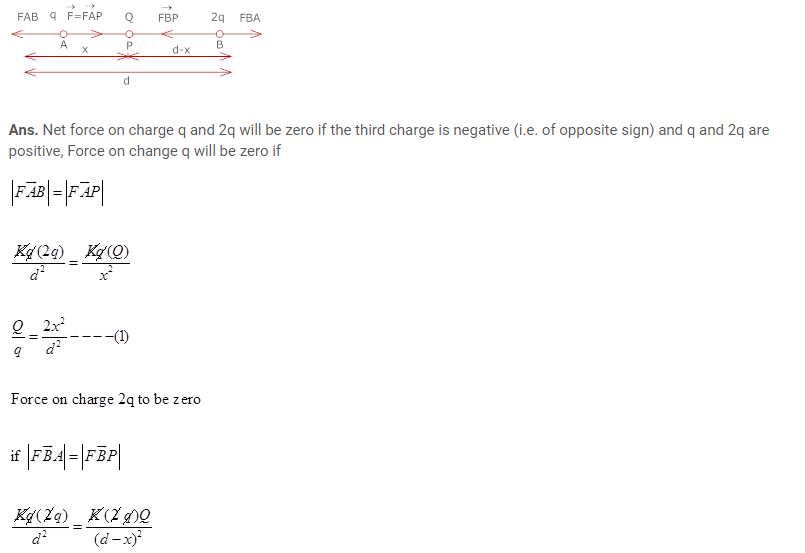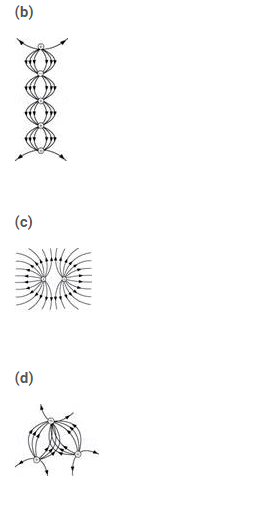3 Mark Questions
1. A particle of mass m and charge q is released form rest in a uniform electric field of intensity E. calculate the kinetic energy it attains after moving a distances between the plates?









7. What is the force between two small charged spheres having charges of and placed 30 cm apart in air?

8. The electrostatic force on a small sphere of charge due to another small sphere of charge – in air is (a) What is the distance between the two spheres? (b) What is the force on the second sphere due to the first?

The distance between the two spheres is 0.12m.
(b) Both the spheres attract each other with the same force. Therefore, the force on the second sphere due to the first is 0.2N.
9. A polythene piece rubbed with wool is found to have a negative charge of
(a) Estimate the number of electrons transferred (from which to which?)
(b) Is there a transfer of mass from wool to polythene?
Ans. (a) When polythene is rubbed against wool, a number of electrons get transferred from wool to polythene. Hence, wool becomes positively charged and polythene becomes negatively charged.



11. A point charge +10 is a distance 5 cm directly above the centre of a square of side 10 cm, as shown in Fig. 1.34. What is the magnitude of the electric flux through the square? (Hint: Think of the square as one face of a cube with edge 10 cm.)
Ans. The square can be considered as one face of a cube of edge 10 cm with a centre where charge q is placed. According to Gauss’s theorem for a cube, total electric flux is through all its six faces.


13. A point charge causes an electric flux of – to pass through a spherical Gaussian surface of 10.0 cm radius centered on the charge. (a) If the radius of the Gaussian surface were doubled, how much flux would pass through the surface? (b) What is the value of the point charge?

Therefore, the value of the point charge is –8.854 nC.
14. A conducting sphere of radius 10 cm has an unknown charge. If the electric field 20 cm from the centre of the sphere is and points radially inward, what is the net charge on the sphere?

15. A uniformly charged conducting sphere of 2.4 m diameter has a surface charge density of 80.0 /m2. (a) Find the charge on the sphere. (b) What is the total electric flux leaving the surface of the sphere?
Ans. (a) Diameter of the sphere, d = 2.4 m
Radius of the sphere, r = 1.2 m





Ans. (a) The field lines showed in (a) do not represent electrostatic field lines because field lines must be normal to the surface of the conductor.
(b) The field lines showed in (b) do not represent electrostatic field lines because the field lines cannot emerge from a negative charge and cannot terminate at a positive charge.
(c) The field lines showed in (c) represent electrostatic field lines. This is because the field lines emerge from the positive charges and repel each other.
(d) The field lines showed in (d) do not represent electrostatic field lines because the field lines should not intersect each other.
(e) The field lines showed in (e) do not represent electrostatic field lines because closed loops are not formed in the area between the field lines.
18. Suppose that the particle in Exercise in 1.33 is an electron projected with velocity . If E between the plates separated by 0.5 cm is , where will the electron strike the upper plate? (| e | = .)


Mohd. Sharif Qualification: B.Tech (Mechanical Engineering) [Founder of Wisdom Academy] [Aim Foundation & Free-Education.In] [Engineer By Profession | Teacher By Choice] [Blogger, YouTube Creator]






